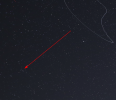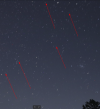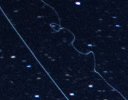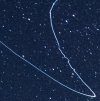nmarsollier
Member
Hey, darkness is a shadow projected from the sky in the sensor.There is nothing that emits darkness. Anything attached to the white dot can only obscure the background for a very short time and would not noticeably darken it.
In long exposures would show the light in the background a little bit darker that the rest




